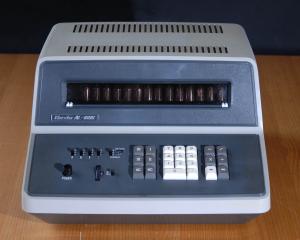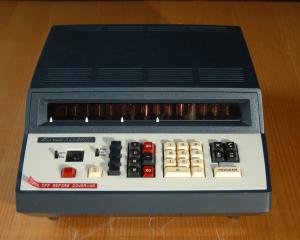Casio Calculators - Overview
The Casio company was established by the Kashio brothers in 1936 as a technical manufacturing company. The brothers seem to have had a strong innovative streak and at the end of the 1940s they formed the idea of developing an electrical calculator.
With transistors not yet available and vacuum tubes being too large, expensive and power hungry, an electromechanical design was pursued. A prototype was completed by 1954 and the final version was released to the market in 1957 as the Casio 14-A, a desk sized 4-function machine with relay logic and a 10-key keyboard. Casio’s next calculator was the fully transistor 001, released in 1965. This was a 4 function desktop machine with a 10-key keyboard and a set of rotary switches that could be used to set up a constant number. The model 101 was an improved version of the 001 and was Casio’s first export product, exported to Australia in 1966.
Casio AL-1000 Calculator
Casio continued to innovate and in October 1967 the AL-1000 was released. This first-generation all-transistor machine introduced a 30-step memory that could store and replay keystroke sequences, and four memory stores for constants or intermediate results.
Casio claim this to be the world’s first programmable calculator but the Olivetti Programma 101 well predates the Casio and also has loop and conditional branch capabilities. The Casio AL-1000 lacks both of these and is therefore only capable of one-shot single sequence replay, a rather limited form of “programming”.
Casio AL-2000 Calculator
The AL-2000 was introduced in late 1969 and is functionally very similar to the AL-1000.
The AL-2000 is innovative for its extensive use of integrated circuits which in turn allows it to be smaller than the AL-1000. It uses Japanese-made SSI ICs and two very early US-made medium scale ICs in the core of its arithmetic logic.
Casio Continues in the Calculator Business
As can be seen from the above, Casio began its calculator business as an innovator and continued to innovate through the dawn period. Casio carried on in the calculator business through the great expansion and shake-out of the early 1970s and has been a major developer and seller of calculators ever since. Continued innovation has allowed Casio to survive and prosper in this competitive market.



